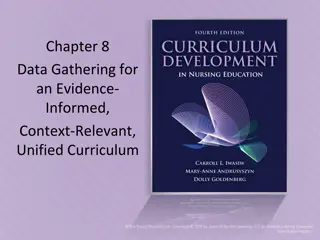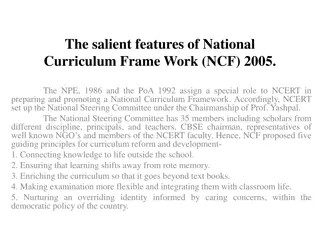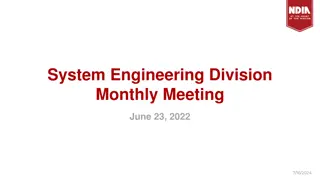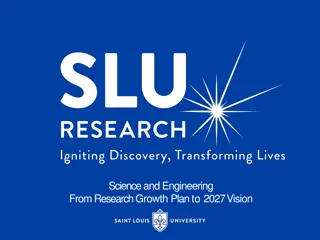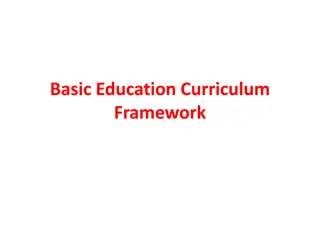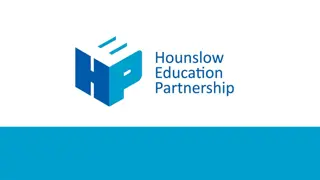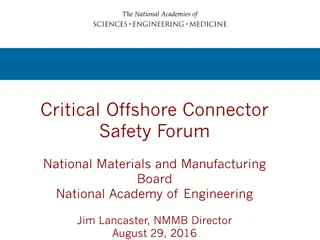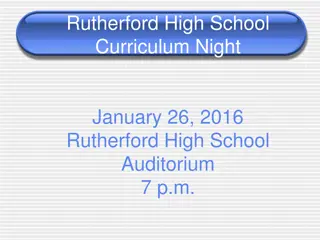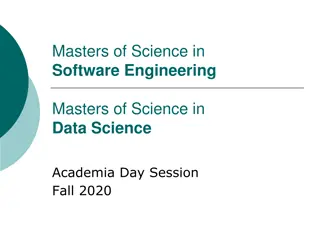Understanding the 2016 Science and Technology/Engineering Curriculum Framework
Explore the vision, goals, and emphasis of the 2016 Science and Technology/Engineering (STE) Curriculum Framework in Massachusetts. Emphasizing relevance, rigor, coherence, and engagement, the framework focuses on civic participation, college preparation, and career readiness. It promotes inquiry-based learning, integration of core ideas and practices, and the blending of science, engineering, and technology to develop a deep understanding of concepts and foster problem-solving skills.
Download Presentation

Please find below an Image/Link to download the presentation.
The content on the website is provided AS IS for your information and personal use only. It may not be sold, licensed, or shared on other websites without obtaining consent from the author. Download presentation by click this link. If you encounter any issues during the download, it is possible that the publisher has removed the file from their server.
E N D
Presentation Transcript
Introduction to the 2016 Science and Technology/Engineering (STE) Curriculum Framework 1
Understanding the Vision and Goals of the Massachusetts STE Standards 2 2
How are these words related to your current science program/curriculum? Relevance Rigor Coherence Engagement 3
Vision Interactive Read the MA STE Vision pages 3-6 of the 2016 STE Framework Identify a key sentence or phrase that you think is particularly important for your work. What is one message you will take away? 4
Goals for STE education Civic Participation Informing real world decisions and solving problems College Preparation Developing a deep understanding of concepts and practices Career Readiness Engaging in the scientific and technical reasoning required by many fields 5
Emphasis in 2016 STE Standards Implication for Curriculum & Instruction Relevance: Organized around core explanatory ideas that explain the world around us The goal of teaching needs to shift from facts and concepts to explaining phenomena Inquiry- and design-based learning involves regular engagement with practices to build, use, and apply knowledge Rigor: Central role for science and engineering practices with concepts Coherence: ideas and practices build over time and among disciplines Teaching involves building a coherent storyline over time and among disciplines 6 6
Disciplinary Core Ideas Science & Engineering Practices Rigor: Rigor: The balance of The balance of Concepts, Practices and Concepts, Practices and Applications Applications Application 7 7
Blending Science, Engineering, & Technology Science Interconnectedness Aspects of each discipline play a role in helping explain and connect concepts and applications. Understands natural world Needs new tools for discoveries Technology Engineering Science answers questions using technology for experiments and observations that engineers have created. Result of engineering Created to solve needs and wants Uses science discoveries Designs products and processes to meet needs 8
Aspirations for MA 2016 Standards originated from A Framework for K-12 Science Education Successful students will: Have an appreciation for the beauty & wonder of science Gain knowledge to engage in public discussion Become analytical consumers of scientific technology and information Develop skills to enter careers in science, technology, or engineering 10
2016 STE Framework Components Importance of Science and Engineering in Early Education Science and Technology/Engineering Laboratories Value of Crosscutting Concepts and Nature of Science in Curriculum Relevant Contexts for Teaching STE The Value of Out of School Time Programming Safety Practices and Legal Requirements Dissection and Dissection Alternatives A Vision of STE Education Guiding Principles for Effective STE Education STE Standards Science and Engineering Practices Progression Matrix Value of Language, Literacy, & Math for STE Learning for All Disciplinary Core Idea Progression Matrix Strand Maps of STE Standards The Case for an Integrated Approach for Pre-K-8 11
Key innovations for MA Explain phenomena & apply concepts Practices & core ideas Coherent progressions of learning PreK-8 grade-by-grade standards 14 www.nymetroparents.com/fairfield/article/Hamden-Hall-Country-Day-School-in-CT-Hosts-Engineering-Workshop-for-Elementary-Teachers#.VFo0pGewWTE
What an STE standard looks like Early Elementary ESS3. Earth and Human Activity K-ESS3-3. Communicate solutions to reduce the amount of natural resources an individual uses.* Clarification Statement: Examples of solutions could include reusing paper to reduce the number of trees cut down and recycling cans and bottles to reduce the amount of plastic or metal used. Asterisk (*) at the end of some standards designates those standards that have an engineering design application. Articulates expected performance/demonstration Does not limit curriculum and instruction to the included practice 16
What an STE standard looks like Upper Elementary PS4. Waves and Their Applications in Technologies for Information Transfer 4-PS4-1. Develop a model of a simple mechanical wave (including sound) to communicate that waves (a) are regular patterns of motion along which energy travels and (b) can cause objects to move. Clarification Statement: Examples of models could include diagrams, analogies, and physical models. State Assessment Boundary: Interference effects, electromagnetic waves, or non-periodic waves are not expected in state assessment. Articulates expected performance/demonstration Does not limit curriculum and instruction to the included practice 17
What an STE standard looks like Middle School LS2. Ecosystems: Interactions, Energy, and Dynamics 7.MS-LS2-5. Evaluate competing design solutions for protecting an ecosystem. Discuss benefits and limitations of each design.* Clarification Statements: Examples of design solutions could include water, land, and species protection, and the prevention of soil erosion. Examples of design solution constraints could include scientific, economic, and social considerations. Asterisk (*) at the end of some standards designates those standards that have an engineering design application. Articulates expected performance/demonstration Does not limit curriculum and instruction to the included practice 18
What an STE standard looks like High School PS2. Motion and Stability: Forces and Interactions HS-PS2-5. Provide evidence that an electric current can produce a magnetic field and that a changing magnetic field can produce an electric current. Clarification Statements: Examples of evidence can include movement of a magnetic compass when placed in the vicinity of a current-carrying wire, and a magnet passing through a coil that turns on the light of a Faraday flashlight. State Assessment Boundary: Explanations of motors of generators are not expected on state assessment. Articulates expected performance/demonstration Does not limit curriculum and instruction to the included practice 19
PreK- 8 Standards include: Earth and Space Science Life Science (Biology) Physical Science (Chemistry and Physics) Technology/Engineering Districts may provide a context or specific focus: Robotics Marine Ecology Biotechnology Computer Science 20
PreK-8 grade-by-grade standards Grade-specific standards support: Collaboration and sharing across districts on curriculum and resources Consistency when students move schools/districts Standards are appropriate for students of each grade All 4 disciplines in each grade encourage integrated curriculum 21
Key take-aways The standards are the outcomes of learning that students can demonstrate what they know what they are able to do A lesson may include one or more practices. By the end of the unit or year, students should have multiple opportunities to apply several practices. STE standards guide teaching and learning. 22
Engineering Design Scientific Inquiry 2016 Massachusetts Science and Technology/Engineering Curriculum Framework Appendix 1: Science and Engineering Practices Progression Matrix 23 23
Science and Engineering Practices Asking questions (for science) and defining problems (for engineering) Developing and using models Planning and carrying out investigations Analyzing and interpreting data Using mathematics and computational thinking Constructing explanations (for science) and designing solutions (for engineering) Engaging in argument from evidence Obtaining, evaluating, and communicating information 24
Science and Engineering Practices Pick a Standard and Brainstorm with group: What does this practice look like in the classroom? What will students be doing? How will students demonstrate their understanding of this practice? Record ideas for both questions 25
Resources 26 26
Curriculum Resources FAQ High-quality curriculum resources Strand Maps What to Look for guides All resources accessed at: Science and Technology/Engineering Implementation Resources 27
Grades K-12 What to Look For Guides 29 Massachusetts Department of Elementary and Secondary Education
MCAS Information Grade 5, 8 and 10 STE MCAS exams are all fully aligned to the 2016 Standards Exams are computer-based, unless paper-based testing is a required accommodation Exam information available at http://www.doe.mass.edu/mcas Questions? please call 781-338-3625 or send an email to mcas@doe.mass.edu 30
STE Implementation Support STE Leaders Network District collaboration with DESE support around STE curriculum & instruction Email stem@doe.mass.edu with questions 31






